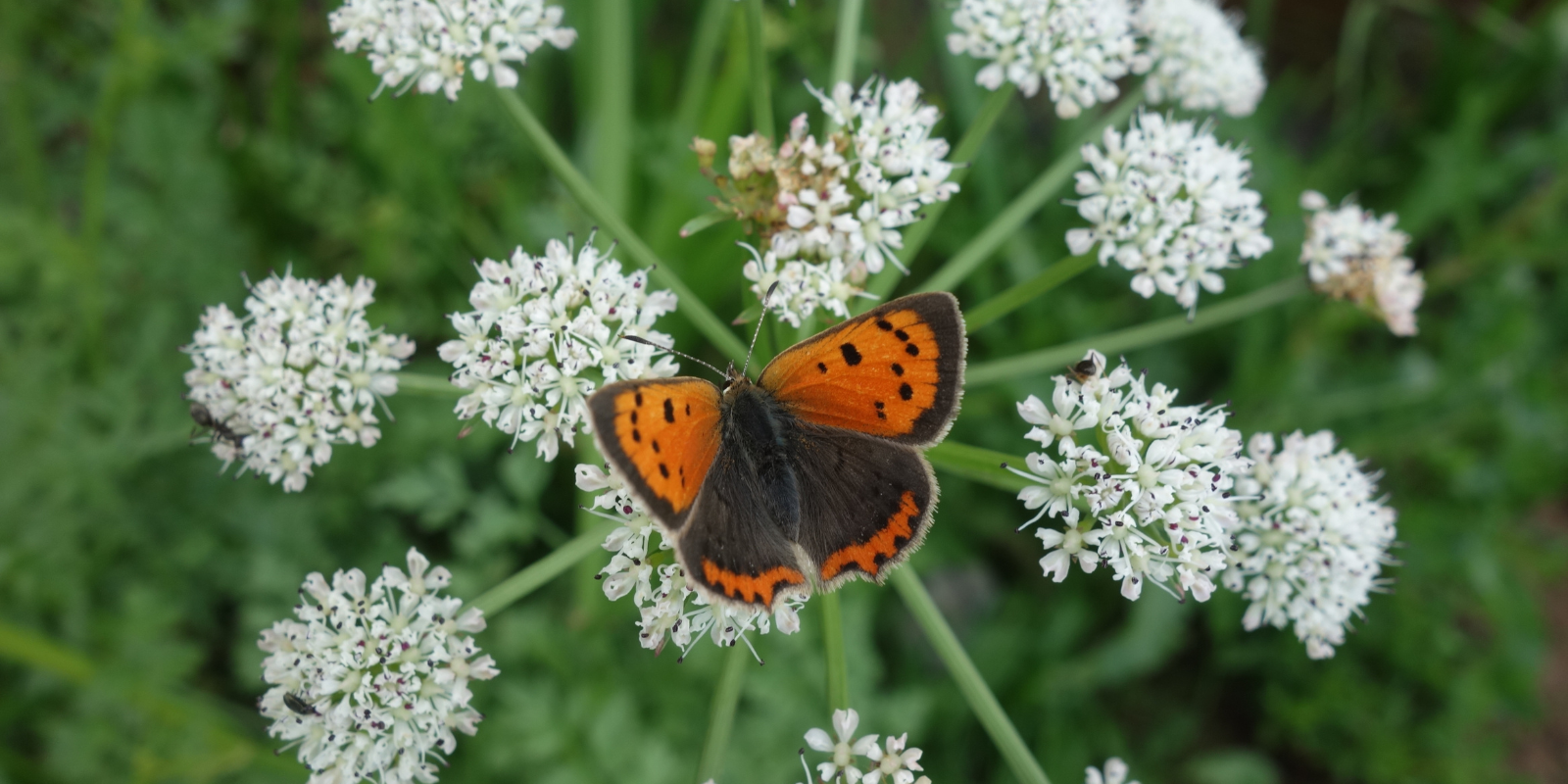One of the loveliest sights to see in summer is a butterfly fluttering from flower to flower.
Butterflies are not just beautiful though, they are vital to our ecosystem both as pollinators and as part of the food chain. However, their numbers are in long term decline, and we cannot ignore this.
Butterflies in decline
Butterfly populations are a very important indicator of how nature is doing as a whole, and they act as an early warning sign for other wildlife losses. If butterfly numbers are in decline, then biodiversity in general is in trouble. We talked to our Head of Ecology, Lindsay Mackinlay, about keeping track of butterfly numbers on our sites...
“One of the challenges we have at The Future Forest Company is ensuring that our work is making a measurable difference to wildlife,” Lindsay tells us. “One way we keep an eye on what is going on is by carrying out regular walks along the same line, in the same field and in good weather conditions to count the number of butterflies and bumblebees we see. These are known as transect surveys. They complement our other surveys on plants, birds, bats, otters, habitats and sometimes even great crested newts, aquatic insects and lichens! All this information provides different pieces of a bigger jigsaw that allows us to judge the success of our management and to tweak what we are doing (as wildlife doesn't play by the rules!).
mmmm

mmmm
Carrying out butterfly transects
“At the moment, we are lucky that we have a number of volunteers at places like Leadloch, Dumyat and Mill of Plunton who go out and walk the same route once a month in good weather conditions and simply count what butterfly and bumblebee species they see. Our own staff also do this at Brodoclea, and I do similar work at our Carston and Pleasantfield sites.
Weather challenges
“The key thing to this work is the weather, as many insect species won't fly if it is raining, if there is no sun or it simply isn't warm. All a challenge in Scotland! That is why we need the help of local people who can look out their window and take advantage of the right weather conditions when they come along. As you can imagine, this year has been hard as summer doesn't seem to have arrived, and that has been reflected in the butterflies and bumblebees we are seeing... or not seeing as the case may be!
“We had a great May with lots of Orange-tip and Green-veined butterflies on the wing but more recently, it has been poor, with fewer butterflies, such as Meadow Browns and Ringlets, and hardly any bumblebees seen during my own walks. I continue to pray for a drier spell (aren't we all!) This poor showing is not due to our management, which is seeing more wild plant species present than when we took over the management of many sites, but the poor weather. I am seeing the same in my garden, which was covered in bees last year but not this last month,” Lindsay says.
mmmm

mmmm
Building up the picture year by year
“It is why we will do these surveys every year so we get a better measurement of the effects of our management, rather than the effects of one year's poor summer. It also ensures that we have the data to answer any queries about whether we are making a difference. This is crucial, as we pride ourselves as a company in being transparent and honest in what we do.
mmmm

mmmm
Butterfly hero!
“However, despite the bad weather we are having, some species get on with it regardless it seems, as we are starting to get reports of lots of Northern Brown Argus butterfly eggs being laid on common rockrose plants at Dumyat. I take my hat off to this rare butterfly as it clearly is taking full opportunity of the brief breaks in the rain and cold we are getting at the moment!”
Take action for butterflies by supporting our work today!
